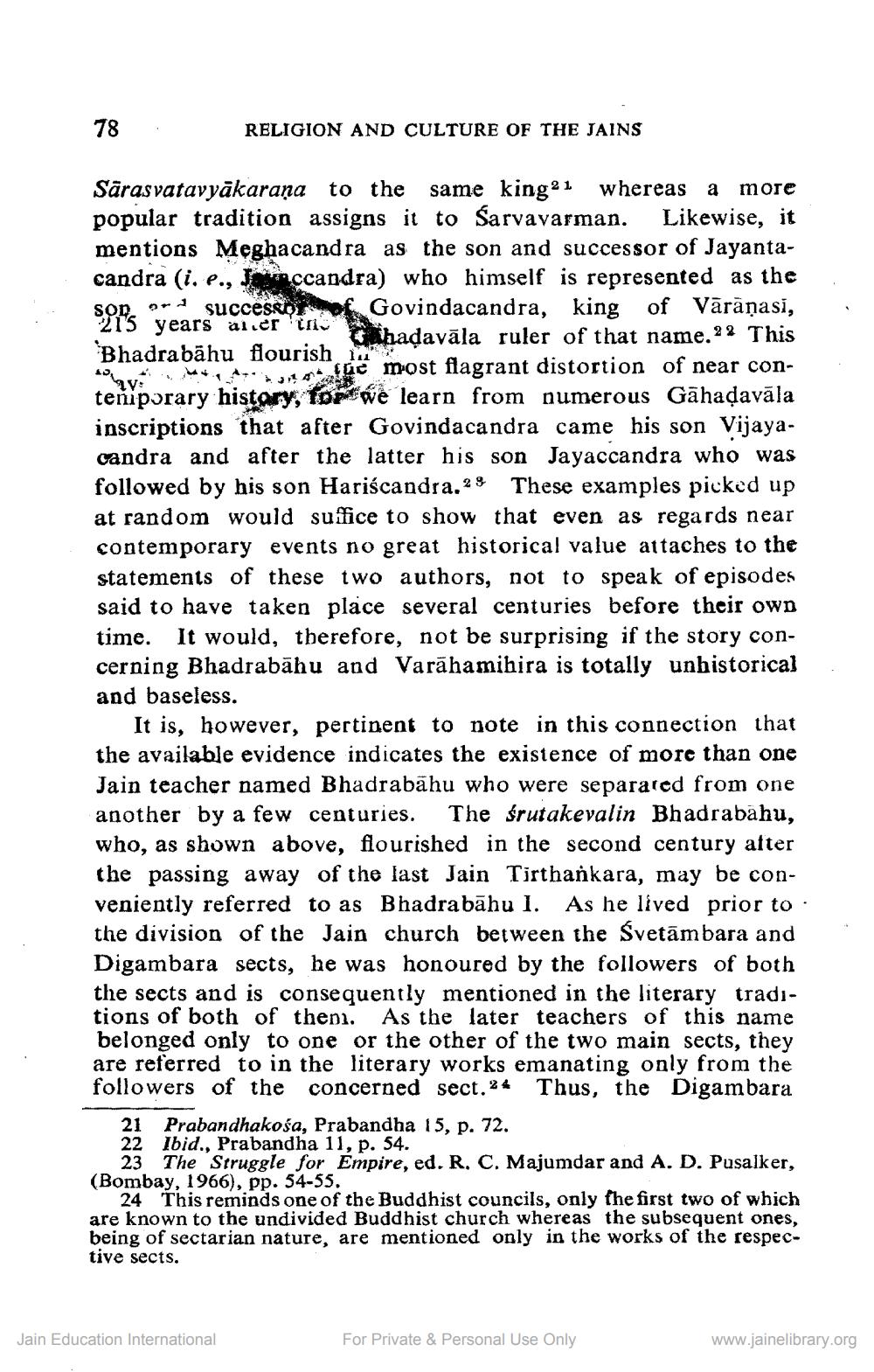________________
78
RELIGION AND CULTURE OF THE JAINS
same king21
whereas a more
Sarasvatavyākaraṇa to the popular tradition assigns it to Sarvavarman. Likewise, it mentions Meghacandra as the son and successor of Jayantacandra (i. e., Jaccandra) who himself is represented as the DA successo Govindacandra, king of Vārāṇasi, 215 years alter the
Bhadrabahu flourish
A-
“
hadavala ruler of that name. 22 This the most flagrant distortion of near conteniporary history, for we learn from numerous Gahaḍavāla inscriptions that after Govindacandra came his son Vijayacandra and after the latter his son Jayaccandra who was followed by his son Hariścandra.29 These examples picked up at random would suffice to show that even as regards near contemporary events no great historical value attaches to the statements of these two authors, not to speak of episodes said to have taken place several centuries before their own time. It would, therefore, not be surprising if the story concerning Bhadrabahu and Varahamihira is totally unhistorical and baseless.
It is, however, pertinent to note in this connection that the available evidence indicates the existence of more than one Jain teacher named Bhadrabahu who were separated from one another by a few centuries. The śrutakevalin Bhadrabahu, who, as shown above, flourished in the second century after the passing away of the last Jain Tirthankara, may be conveniently referred to as Bhadrabahu I. As he lived prior to the division of the Jain church between the Svetambara and Digambara sects, he was honoured by the followers of both the sects and is consequently mentioned in the literary traditions of both of them. As the later teachers of this name belonged only to one or the other of the two main sects, they are referred to in the literary works emanating only from the followers of the concerned sect.24 Thus, the Digambara
21 Prabandhakośa, Prabandha 15, p. 72. 22 Ibid., Prabandha 11, p. 54.
23 The Struggle for Empire, ed. R. C. Majumdar and A. D. Pusalker, (Bombay, 1966), pp. 54-55.
24 This reminds one of the Buddhist councils, only the first two of which are known to the undivided Buddhist church whereas the subsequent ones, being of sectarian nature, are mentioned only in the works of the respective sects.
Jain Education International
For Private & Personal Use Only
www.jainelibrary.org




